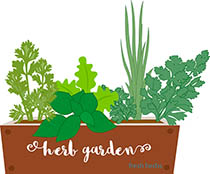


Freeze and use direct into the pan for cooking. Use an ice cube tray, add a few rosemary or sage leaves and olive oil.Or just freeze herbs in a ziploc bag, air squeezed out and just toss them in your cook pot when needed. Mint leaves and eatable flowers and be pretty in ice cubes.Fresh cut herbs, to be used in next few days – wrap in wet paper towels and store in fridge vegetable drawer.Should you be so lucky to have an abundance, preserve them as following: A quick rinse under fresh water should do the trick and ideally flick them dry or pat them with some kitchen paper. Wash your herbs before using them or preserving them.

You best harvest outdoor herbs early morning or late afternoon indoor herbs whenever you want as the temperature and conditions are stable. HARVEST & PRESERVE Choose herbs you use weekly in cooking or infusions so you can harvest a few sprigs at the time. Harder herbs like rosemary, sage, bay leave and thyme can survive all winter up to 3 to 5 C Good herbs to grow indoor are softer herbs like basil, marjoram, lemon thyme and coriander. Watch out not to place them too close central heating and keep an eye on watering them more frequently when the heat is on. Place your herbs in a spot inundated with daylight but not directly in the sun especially behind glass, this may dry or burn them.

If you are sowing them from seed, let them germinate in small containers. Check for good strong roots and good growth. INDOOR GARDEN If you are buying herbs already potted, choose your herb plants wisely. I always have fresh herbs around but for easy use, some tips in how to store your harvest. Le Creuset embellishes your indoor herb garden with these gorgeous counter top planters in cream and cherry red. With the sun dragging its feet, delicate herbs are best kept indoors until actual spring weather and warmer temperature are here.


 0 kommentar(er)
0 kommentar(er)
